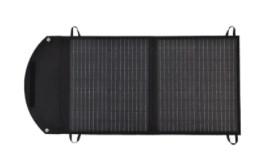The 50w solar blanket, a cutting-edge innovation in renewable energy technology, has been gaining traction for its potential to provide a sustainable source of power. As with any solar-powered device, the charging efficiency of the 50w solar blanket is a paramount concern for consumers and environmental enthusiasts alike. This article delves into the intricacies of how these solar blankets perform under the sun's rays, examining the factors that influence their charging efficiency and the implications for users.
The efficiency of a 50w solar blanket is primarily determined by its ability to convert sunlight into usable electrical energy. This process, known as the photovoltaic effect, is dependent on several variables, including the quality of the solar cells, the angle of incidence of sunlight, and environmental conditions such as temperature and cloud cover. High-quality 50w solar blankets are designed with advanced photovoltaic cells that maximize the absorption of sunlight, thereby enhancing the charging efficiency.
One of the key factors affecting the charging efficiency of a 50w solar blanket is the material used in its construction. Durable and high-transparency materials allow more light to reach the solar cells, which in turn increases the energy conversion rate. Additionally, the blanket's design plays a crucial role in its performance. A well-ventilated structure can help prevent overheating, which is known to reduce the efficiency of solar cells.
The orientation and tilt of the 50w solar blanket also significantly impact its charging efficiency. Ideally, the blanket should be positioned to face the sun directly, which typically means angling it towards the equator during the day. This maximizes the amount of sunlight that the solar cells can absorb. However, this can be challenging in practice, especially in areas with variable weather conditions or limited space.
Environmental factors such as dust, dirt, and snow can also reduce the charging efficiency of a 50w solar blanket. Regular cleaning and maintenance are essential to ensure that the solar cells remain free from obstructions that could hinder their performance. Some advanced models come with self-cleaning features or are designed with hydrophobic coatings that repel water and dirt, further enhancing their efficiency.
It's also important to consider the temperature coefficients of the solar cells used in the 50w solar blanket. High temperatures can negatively affect the performance of solar cells, reducing their efficiency. Therefore, the blanket's design should include thermal management solutions, such as heat sinks or cooling channels, to dissipate excess heat and maintain optimal operating temperatures.
The charging efficiency of a 50w solar blanket is not only about the amount of energy it can generate but also how effectively it can store or transfer this energy. High-quality batteries or energy storage systems are necessary to retain the energy harvested by the solar blanket. Additionally, efficient energy management systems can help regulate the flow of electricity, ensuring that the 50w solar blanket operates at peak efficiency.
In conclusion, the charging efficiency of a 50w solar blanket is a multifaceted issue that involves the quality of materials, design considerations, environmental factors, and energy storage solutions. By understanding these factors, users can make informed decisions when selecting a solar blanket that meets their energy needs while ensuring optimal performance and longevity. As technology continues to advance, we can expect the charging efficiency of 50w solar blankets to improve, making them an even more viable option for sustainable energy solutions.


